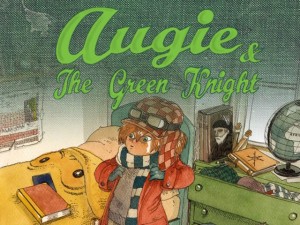Kickstarter.com is a website to fund creative, community based projects that might not otherwise receive funding. Individuals and businesses set a financial goal needed to fulfill the proposed idea. The project proposal is then made public for visitors to view and offer donation amounts. If the proposed goal is met, the backers are charged the amount they initially promised. If the project donation goal is not met within the expiration period, no one is charged and the project goes unfunded. Projects on Kickstarter range from food related, to art, to dance, to performance, to technology. The website advertises that nearly half of the projects submitted become fully funded. Considering this success rate, I began an analysis on what made certain project proposals more successful at reaching their funding targets than others.
Not only do the projects range in category, they also range in geographic region and scope. For example, Reading Rainbow, a successful television show aimed at inspiring young children to read was discontinued in 2006. The project proposal has the original face of Reading Rainbow, LeVar Burton sharing his goal to provide the once popular program for free in schools. So far the Kickstarter profile has raised $4.4 million with an initial goal of $1 million. I also reviewed a company called Ninja shoes, which raised $117,438 with an initial goal of $15,000. In the proposal video, Ninja shoe creators have designed a more efficient slip-on shoe made from microfiber.
Another successfully funded Kickstarter project is “Augie and the Green Knight” a children’s book, which raised $311,445 with an initial goal of $30,000. Their project proposal includes ‘stretch goals’. This section offers a breakdown of how each donation milestone will be used to improve the book, such as offering more illustrations and wider distribution.
Common traits of successful Kickstarter.com project proposals:
- Polished face to face videos with the creators of the projects
- The projects are very close to completion, if not already complete
- The viewer is able to see the behind the scenes design and development of the project
- It is clearly outlined how the funds would help the projects
- There is a unique idea or concept that people could care about
In what additional ways can Kickstarter project proposals initiate more interest to raise funds?
In your opinion, is Kickstarter truly an effective way to raise funds for projects?
What sort of accountability do individuals have to their backers to complete the project as originally intended?


Ginger-
I am aware of what Kickstarter is, but I am not sure how it really works. Thanks for a quick synopsis.
I think the ideas/products/services that will generate the most interest on Kickstarter are those that appeal to a person’s emotions. Emotions are the quickest way to people’s wallets. Think about the Sarah McLachlan ASPCA commercials with all those poor animals. It only takes a few dollars a day!
I think ethically it is very important for the owners of the campaigns to stick to the projects initial plan within reason. As we have experienced, projects rarely go exactly as planned, but as long as the campaign is run to maximize the funder’s benefit, I think it is perfectly fine.
Ginger, really enjoyed reading your post! I am familiar with Kickstarter and have had a few friends fund projects through the site. I think it is an effective way to raise funds as well as awareness for projects. While I did not initially think of the project pages on Kickstarter as project proposals, they do fit everything we’ve covered in class: project scope/description, action plan and stakeholders, measures of success (backers and rewards), and major obstacles (risks and challenges listed at the end of each Kickstarter project page). I have definitely gained a new perspective on the site based on these elements.
Your point about accountability is important as well. Kickstarter does warn backers on the FAQ page about doing their own research before supporting a project. The site also holds creators legally responsible for fulfilling any promised rewards which is part of the Terms of Use when signing up.
Lastly, Mark I have to second your comment about emotions. I played Neverhood in my younger years and when the development team posted a new project on Kickstarter (https://www.kickstarter.com/projects/armikrog/armikrog) I thought about backing it. I am more inclined to fund something if it has a nostalgic connection. It looks like the game did meet its goal and will be available on Steam soon.
Great post Ginger, I personally haven’t used Kickstarter before, but your post has gotten me interested in funding some projects. To touch on your questions that you have posted, I have a few ideas.
People like me who haven’t heard of Kickstarter before, could be interested in funding a lot of these projects if only there were advertising to really know about it. It doesn’t have to be costly, because word of mouth really helps and who doesn’t like a good idea.
Kickstarter seems to be very effective way to raise funds as they let investors create the supply and demand for the product. By bring people together, Kickstarter helps finance projects that might not otherwise have been financed.
From what I understand, individuals have a lot of accountability with their projects because they receive money based on the expectation that the project will be created. Now the plans for the project might change, but there is accountability in that well planned projects are usually the ones that get funded.